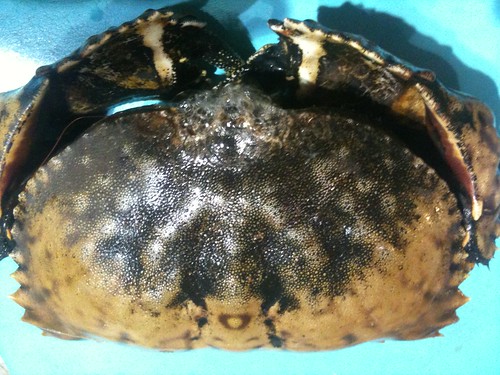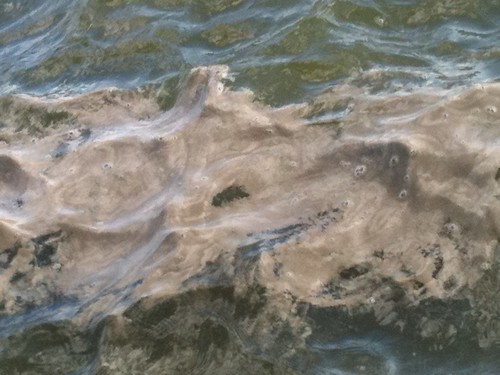In BP's Gulf, A Movie Runs Through It as Miracle Hopes Fade
As I write this, I am traveling on a bus to New York to speak at a screening of The Big Fix, Josh and Rebecca Tickell’s powerful documentary about the explosion of BP’s Deepwater Horizon rig that spewed nearly 200 million gallons of Louisiana crude along the coastlines and marshes of four Gulf states, changing the lives of millions. This film is mandatory viewing for those who want to know what really happened on the ground along the bayous and beaches of a coast that is wedded to oil.
It's a story that continues to be largely ignored. I know because I lived it. A few weeks after the Deepwater Horizon blew, I was part of a team of NRDC communications and policy experts who joined thousands of oil cleanup workers, government officials and scientists who flocked to the pristine marshes of the Louisiana bayou, waiting for the killing oil slicks that took weeks to spread toward the shorelines.
NRDC decided to stay and hasn't left since. For seven months I was based deep in the Louisiana bayou, staffing our Gulf Resource Center, a communications outpost located in an old dental office building in the fishing community of Buras, still leveled by the ravages of Katrina that hit it with bulls-eye precision five years earlier. People stayed and clawed back a living in this water-logged bayou. I'll never forget the Christmas lights and electric angels that adorned the lamp posts that marched down the nearby abandoned streets, an electronic chorus crying out that the community refused to die.
A year later, some things are worse in communities like Buras. The big oil cleanup operations are gone—and with them the money that locals depended on as their livelihoods were destroyed. The shrimp, crab and oyster fishing this year has been dismal. Locals say they haven’t ever seen shrimp catches so poor—and fishermen say abnormalities and deformities are found regularly. People complain about sickness in their communities and about depression and family and neighbor squabbles with the potential to turn violent.


Oiled crab caught by commercial fisherman near Southwest Pass, LA, this fall.
This is the aftermath of the BP oil disaster, the aftermath that much of the local and national media continues to ignore. We've seen this movie before after the the Exxon Valdez destroyed fishing communities in Alaska 20 years ago.
Today, there are stories once in a while that shed rays of light on what's happening here. CNN last month sent a crew to the bayou to do a story about the safety of the seafood, an issue that NRDC has studied closely. NRDC scientists Gina Solomon and Miriam Rotkin-Ellman published a study last month in Environmental Health Perspectives and filed a petition with the Food and Drug Administration to demand improvements to federal food safety testing procedures. The agency so far has refused to budge.
But these media reports are few and far between. For locals who are bear the brunt of this ongoing disaster, they watch their kids continue to suffer respiratory and skin ailments they never seen before the BP explosion, as their husbands no longer shrimp in the waters that were once the most productive in the world. For them, it seems the world simply doesn’t care anymore, despite the fact this region once provided about a third of the nation’s fresh seafood. As Buras fisherman and long time resident Kindra Arnesen says, “If we don’t have shrimp for next year, what do we have? What’s it going to take to re-populate it? (Watch a recent video of Kindra Arnese's recent video about ongoing health problems in her Buras community).
No one knows the answers. But the signs a year and a half after the blowout are not good. Dolphins continue to die in record numbers, pictures of oiled shrimp with no eyes crop up Facebook pages, fishermen offshore report strange lesions in the snapper. This is not proof of Armageddon but evidence that a fishery and its environment are in serious decline.
Exaclty a year ago I posted a blog about the state of the Gulf and the science that was just starting to reveal the impacts of nearly 5 million barrels of dispersant-laced oil; A Holiday Season of Hope and Fear in the Oily Gulf.
Here's how it ended:
Meanwhile, out in the bays and bayous, a few boats still trawl for the remaining shrimp that are on their march out to sea. Many fishermen believe the oil is still out there on the bottom. All worry what will happen next spring when the shrimp and fish return.
This holiday season, everyone in the bayou is still praying for a miracle, a miracle that seems to be growing dimmer with every winter sun.
